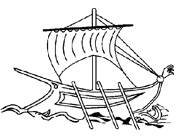|
Level: Type: |
Undergraduate (A+) |
 |
| Instructors: Konstantinos Koukouletsos | |
| Department: Electronic Computer Systems Engineering | |
| Institution: TEI of Piraeus | |
| Subject: Computer Science, Information Technology, Telecommunications | |
| Rights: CC - Attribution-NonCommercial-NoDerivatives |